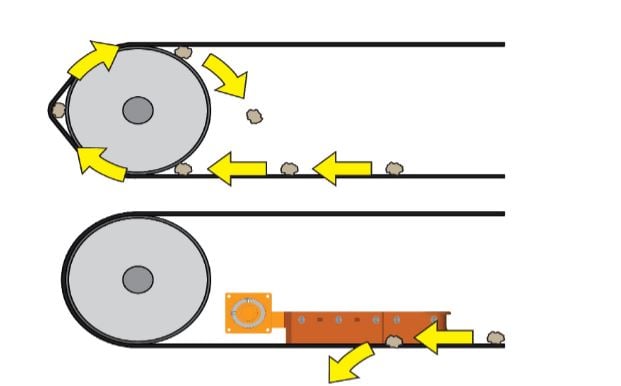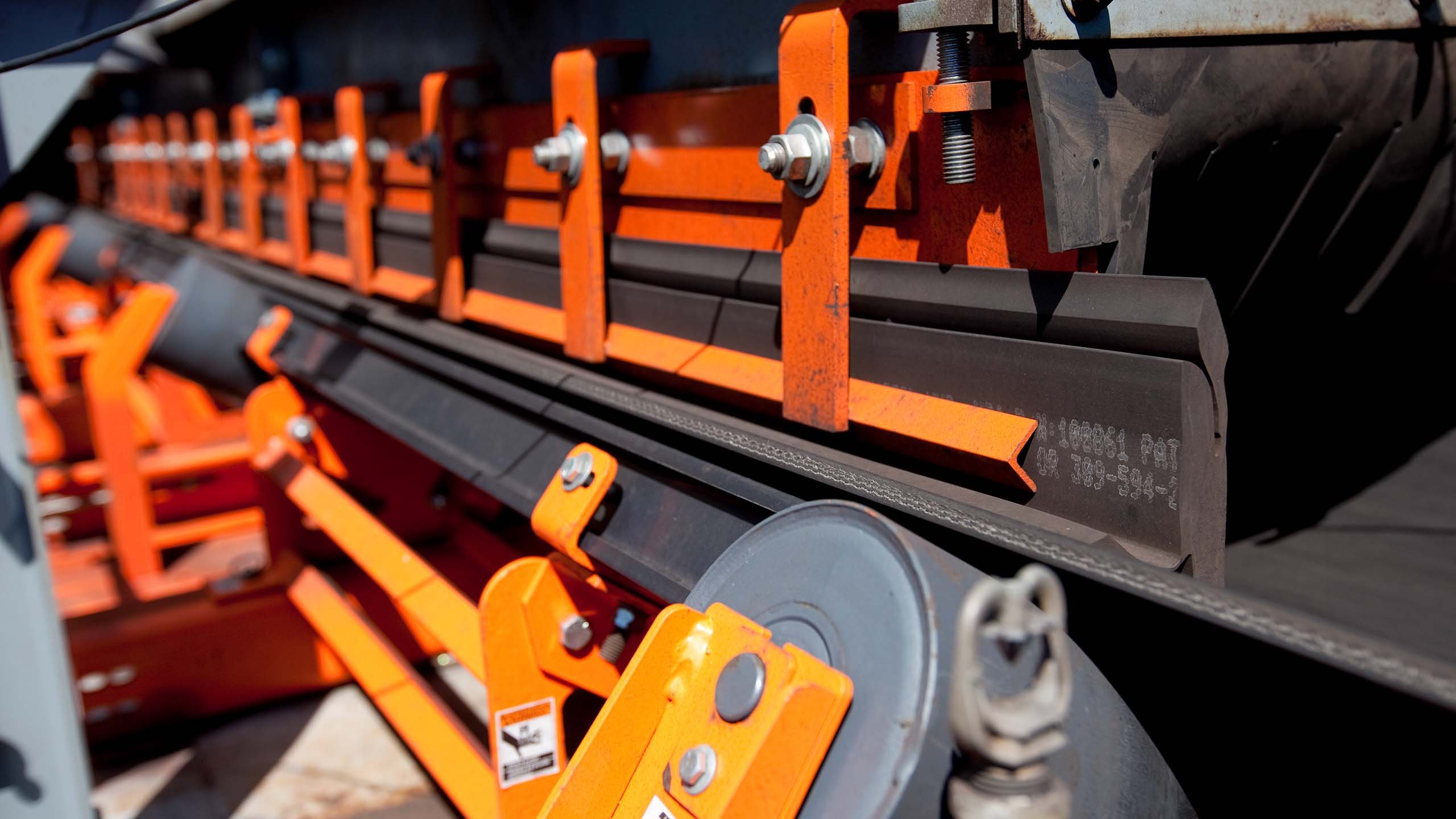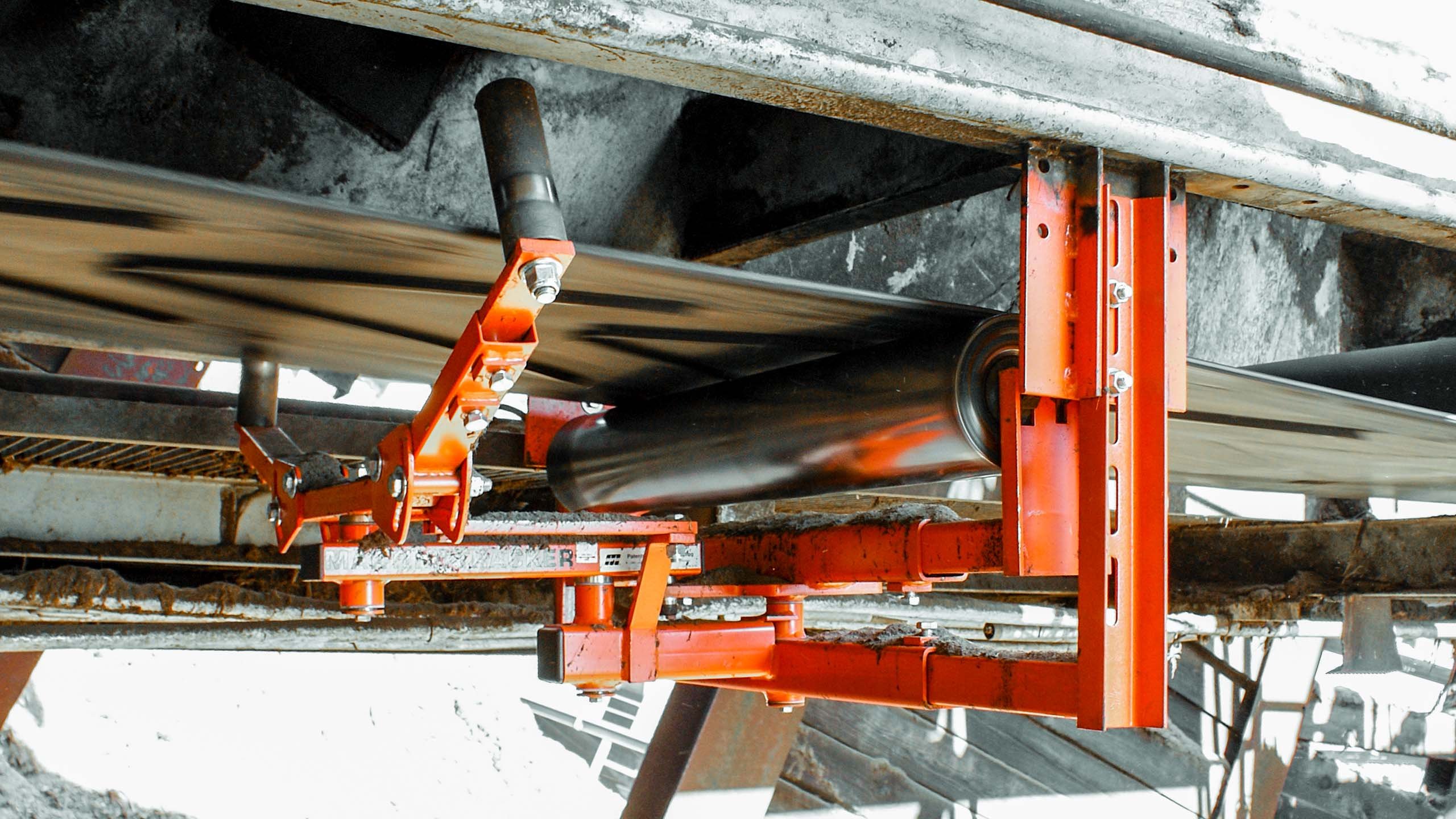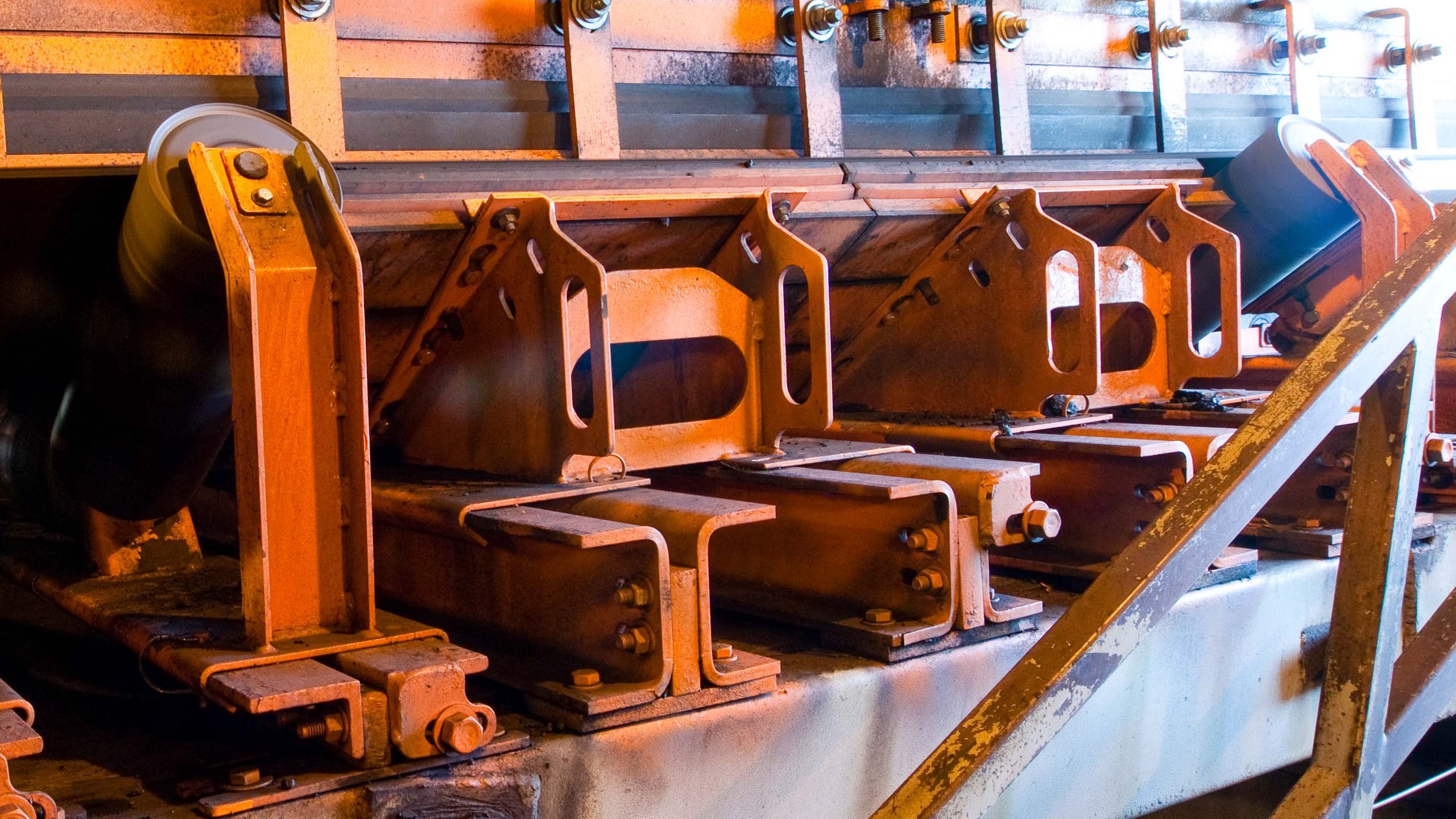Wing-type pulleys are often installed as a method to reduce the risk of belt damage from the entrapment of lumps of material between the belt and the pulley. Wing pulleys feature vanes that resemble the paddle wheel on a steamboat. This design allows material that would otherwise become trapped between a solid pulley and the belt to pass through the pulley face. Between the pulley’s crossbars are inclined, valley-shaped recesses that prevent fine or granular material from being caught between the tail pulley and the return belt. These valleys provide a self-cleaning function; that is, there is little surface area on which material can accumulate, and the rotation of the pulley throws the material off the pulley’s face. If the conveyor is likely to spill some of its cargo onto the return belt, the wing pulley can act as an effective device for removing this spillage without belt damage, although proper sealing of the belt at the load zone along with installation of a pulley-protection plow is the preferred solution.

Wing-type pulleys are also seen on gravity take-ups, where they offer the same benefits and limitations.
Despite their design intention, wing-type tail pulleys are still subject to buildup and entrapment and often do not provide the desired protection, they are most successful on slow-moving belts where cleaning and sealing are not critical requirements. Larger lumps of material can become wedged in the “wings” of the pulley, potentially causing the damage the pulley was designed to avoid.
Wing-type tail pulleys with less than the manufacturer’s recommended minimum bend radius can cause damage to the conveyor belt’s carcass.
The most significant drawback of wing pulleys is the oscillating action they introduce to the belt path. The wings on the pulley introduce a pulsating motion that destabilizes the belt path and adversely affects the belt-sealing system. It is counterproductive to design a transfer point that emphasizes belt stability to minimize fugitive material and then install a winged tail pulley that introduces instability into the system. The Conveyor Equipment Manufacturers Association (CEMA) recommends that wing pulleys not be used on belts traveling over 225 meters per second (450 ft/min).
A better choice than the conventional winged tail pulley is a spiral-wrapped tail pulley. These pulleys have an additional steel strip wrapped in a spiral around the pulley circumference. The steel band is wrapped over the top of the wings in two spirals, converging in the center from each end of the pulley. Wrapping the band(s) of steel around the wing pulley allows the pulley to provide the self-cleaning function but eliminates the “bounce” imparted to the belt.
Spiral-wrapped wing pulleys are sometimes installed as original equipment on new conveyor installations. Existing wing pulleys can be upgraded with narrow, 50 to 75 mm (2 to 3 in.), steel strips welded around the outside edge of the wings.
The best solution to preventing material buildup on tail pulleys is to use a solid flat steel pulley, protected by a cleaning device located directly in front of the pulley. This diagonal or V-type plow should be located just prior to the tail pulley on the non-carrying side of the belt to remove any fugitive material that may be carried on the inside of the belt.




















Leave Comment